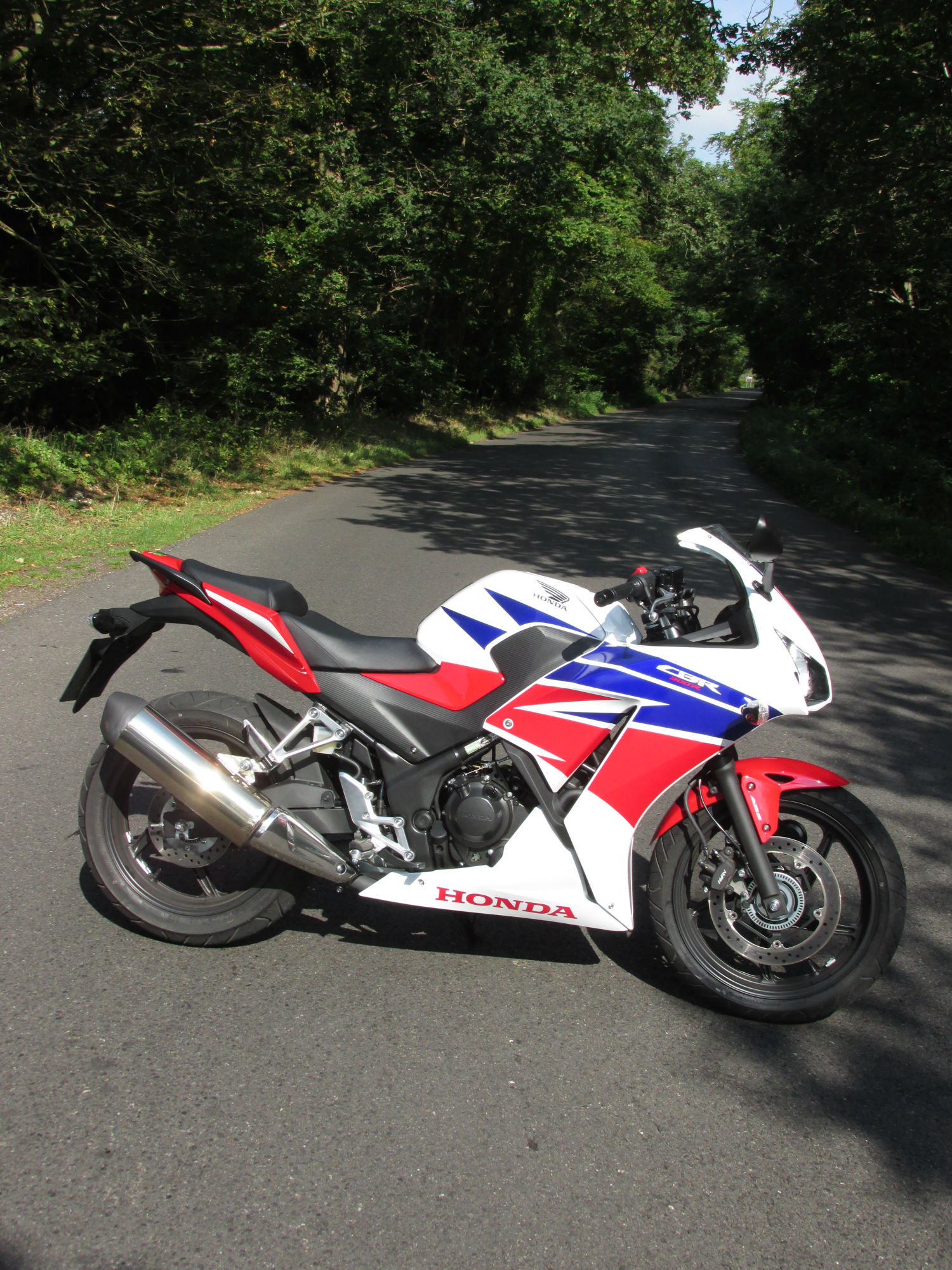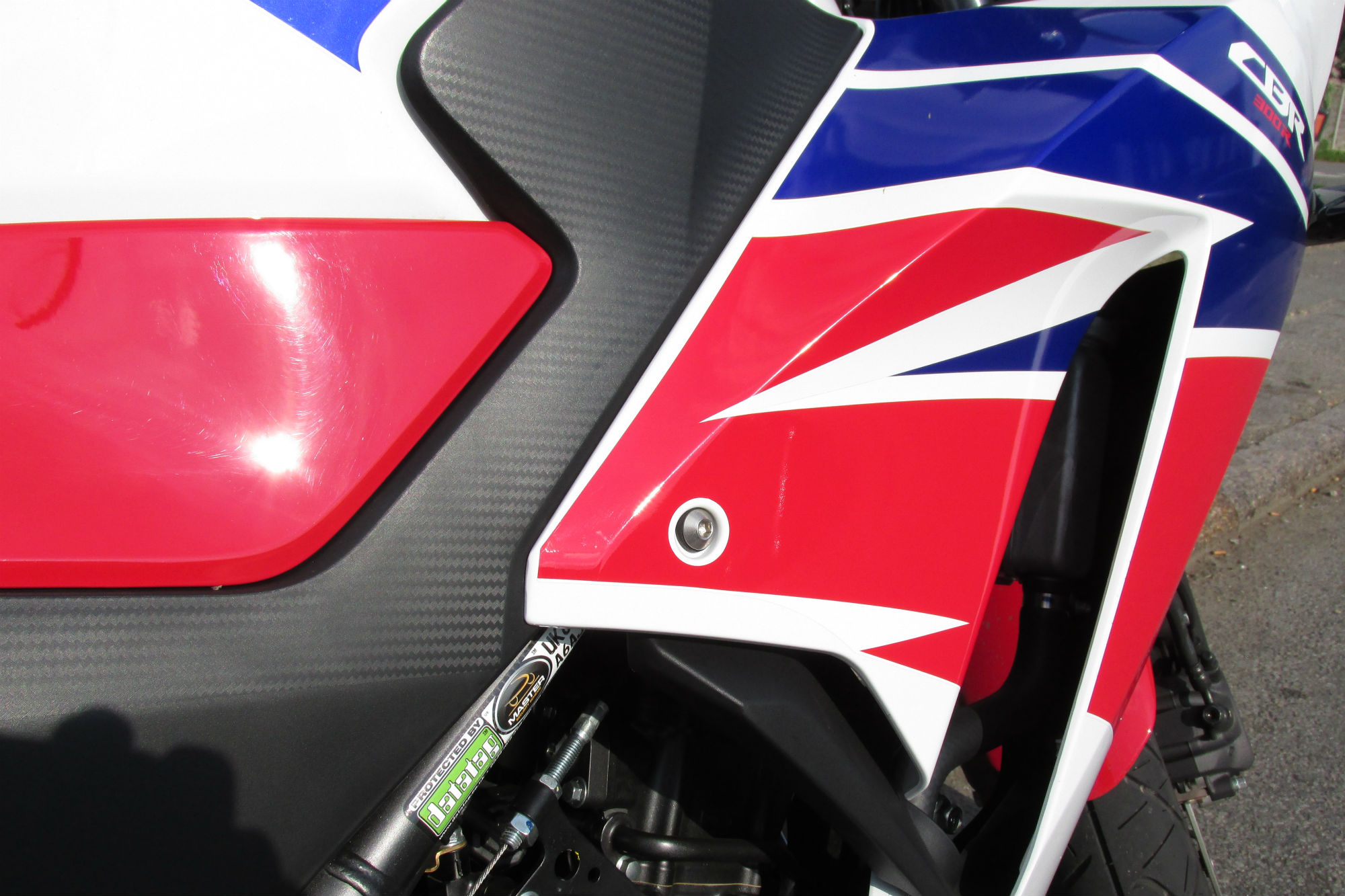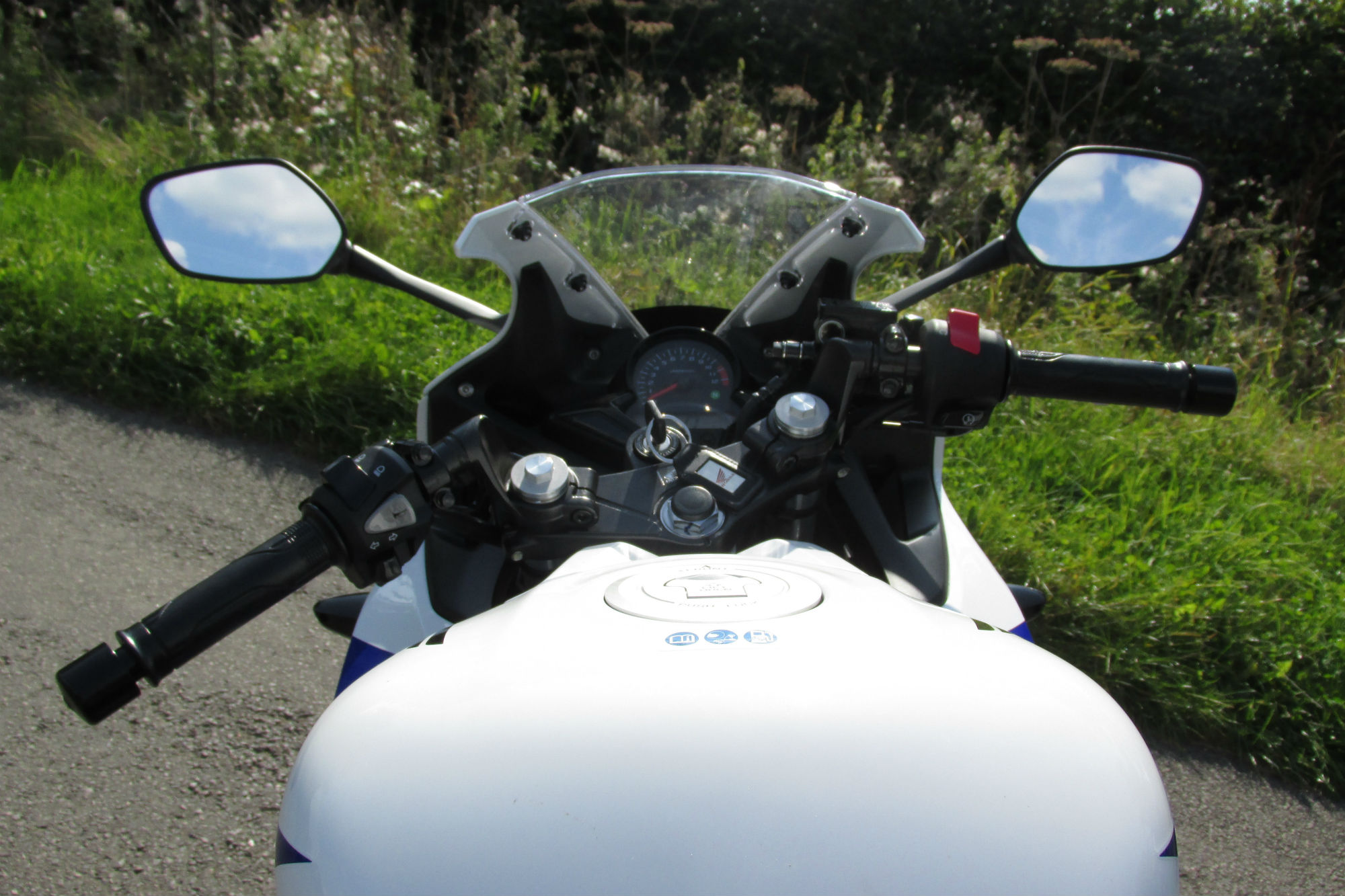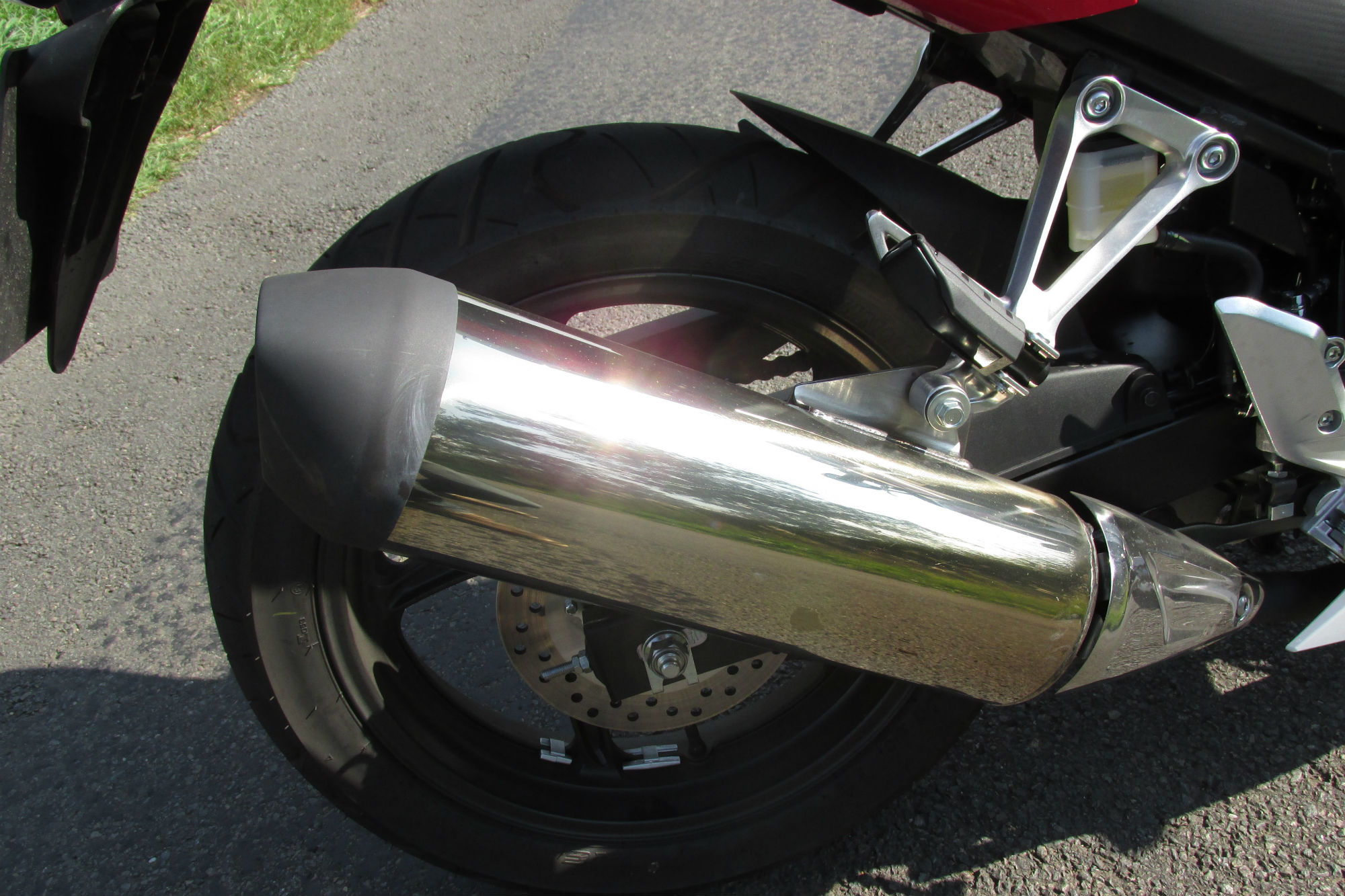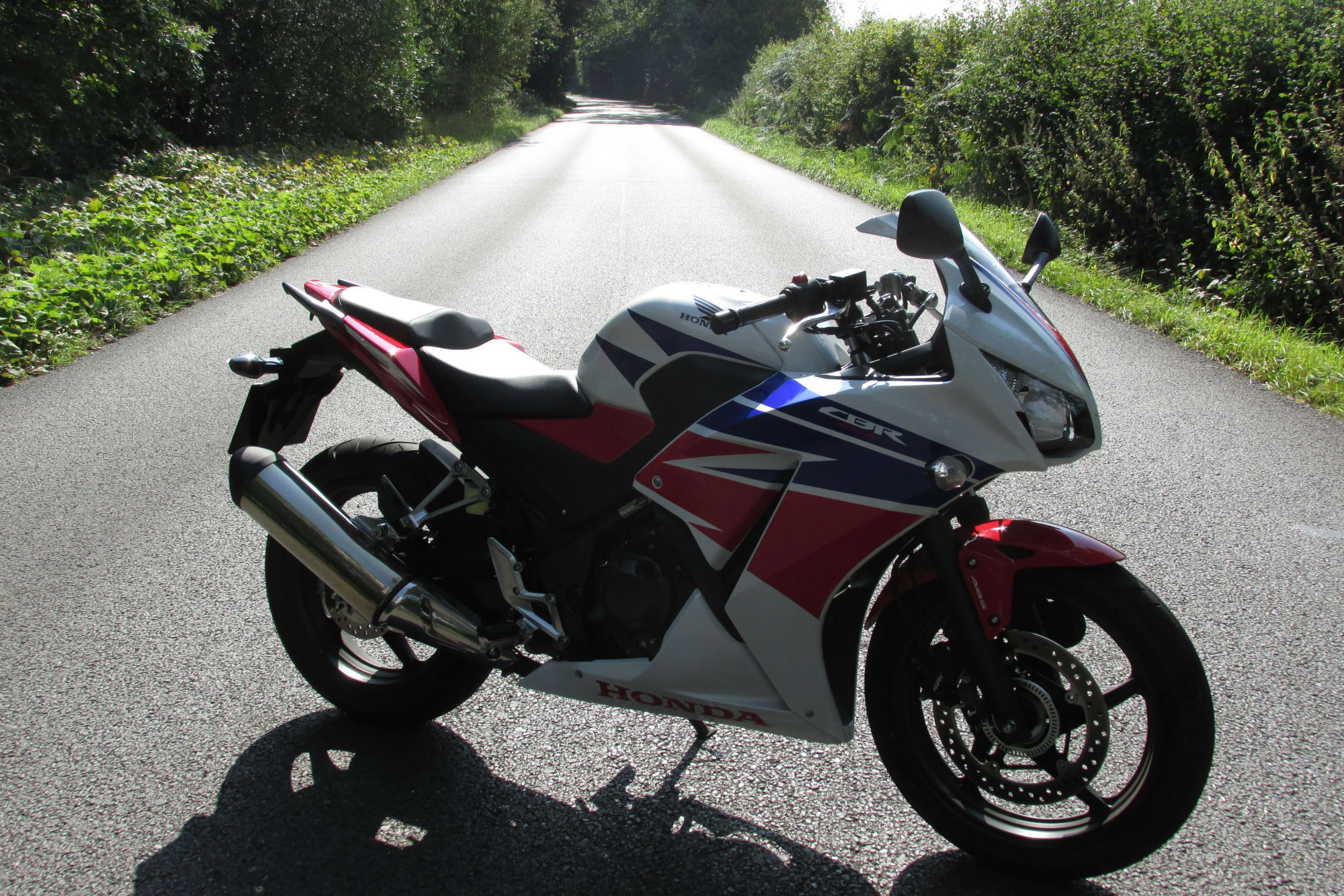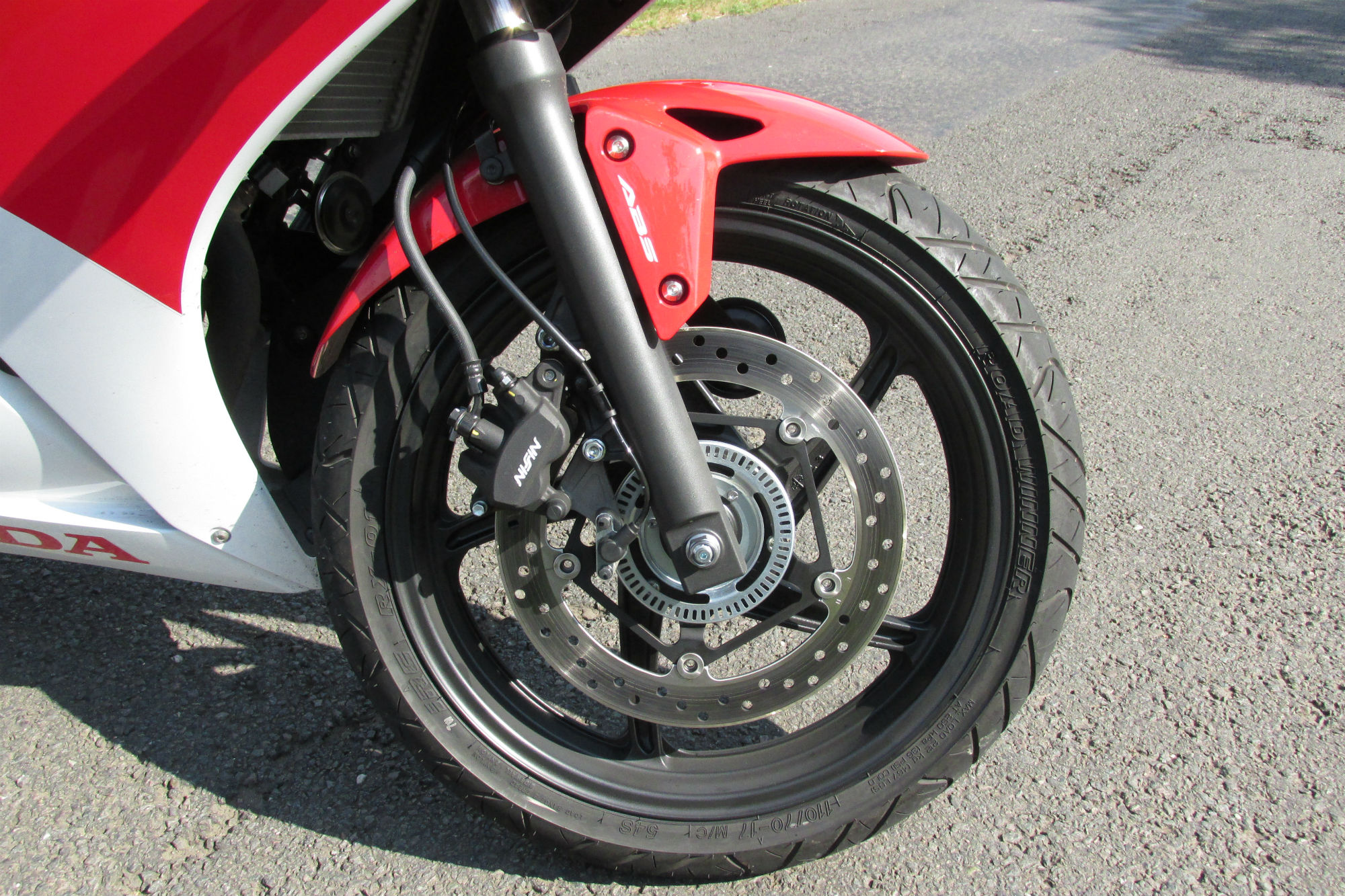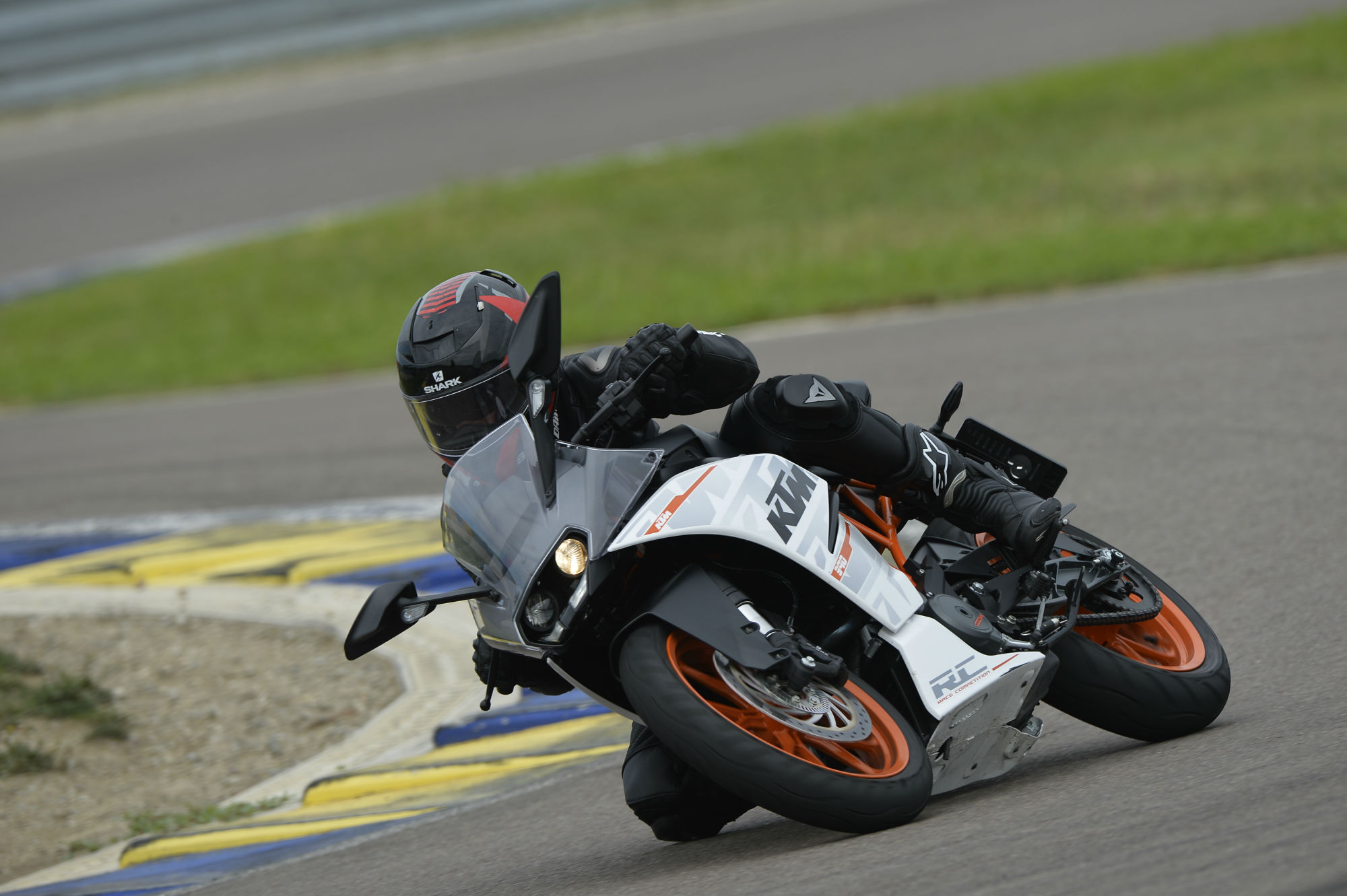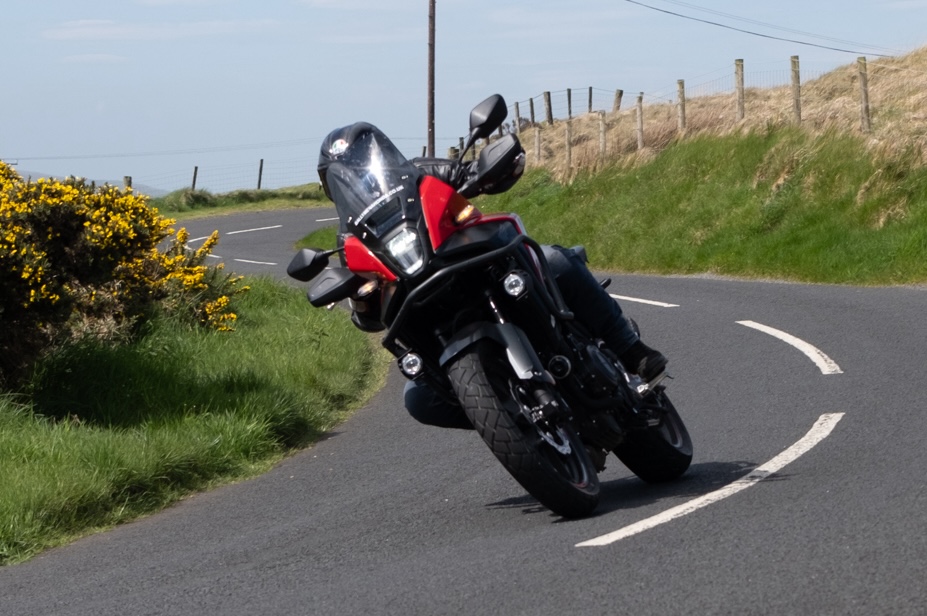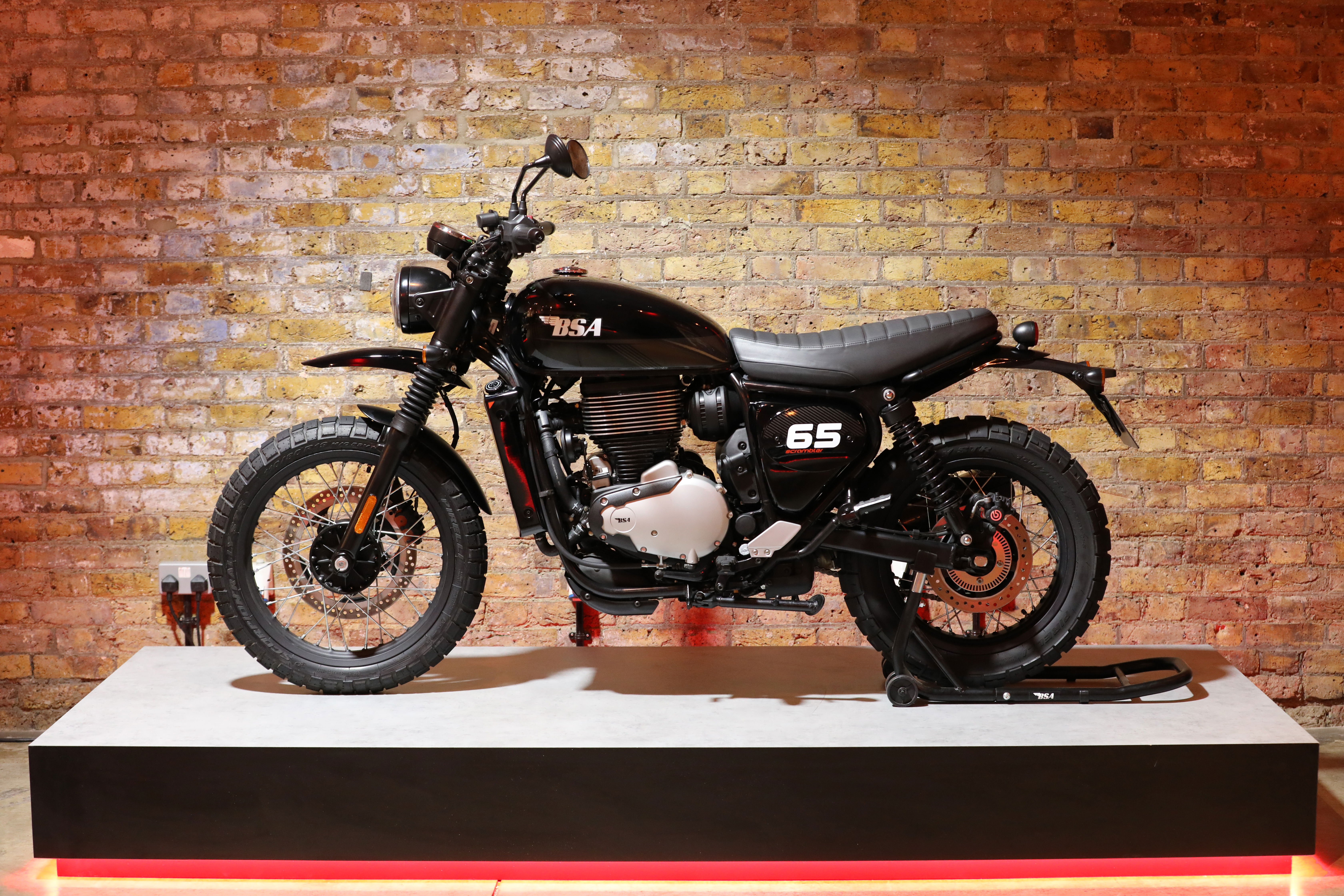First ride: Honda CBR300R review
It could be the cheapest do-it-all Japanese bike you can buy, but is that all it has going for it?
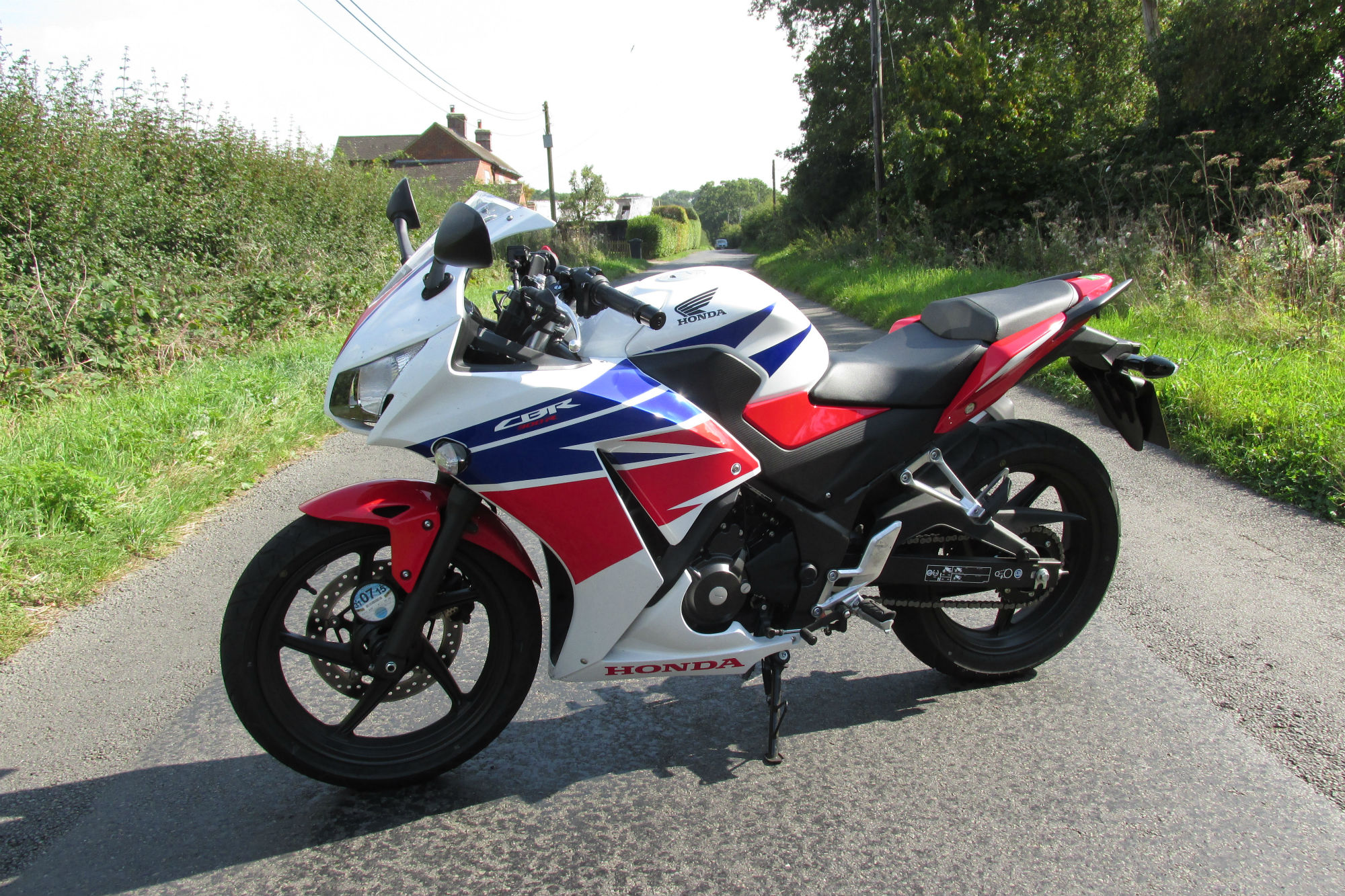

WHAT’S the smallest sum of money you have to spend to get a proper, do-it-all Japanese motorcycle? The answer may be £4,299 on Honda’s new CBR300R.
Yes, you could get a Suzuki Inazuma 250 for less (about £800 less, in fact), but with only 24hp, would you really want to ride from London to Manchester?
You could on the new CBR300R. Easily.
The CBR250R it replaces made barely any more power than the Inazuma at 26hp. Flat-out, ridden by an experienced racer with head, elbows and belly tucked in, it was capable of just over a genuine 90mph. In normal motorway use, it was near the limits of its comfortable performance envelope.
The new CBR300R is actually a 286cc single, up 37cc on the old model courtesy of a longer piston stroke. As well as the extra 4hp, it gets a big increase in torque, from 16.8lbft to 19.9.
It’s also got taller gearing throughout the range thanks to a bigger front sprocket.
At 70mph in top, the rev counter needle is pointing to just under 7,000rpm with the red line way off at 10,500. Open the throttle and within four seconds you’re doing an indicated 80mph (measured by the not officially recognised method of counting in my head). Four or five seconds later comes 90mph. Keep it open and 100mph will arrive soon enough too.
And this is all with a normal rider sitting in normal fashion in a slightly flappy textile jacket.
That easy acceleration in reserve means motorway travel doesn’t feel like a test. It’s the difference between a motorcycle which can sort of do everything if it has to and one which definitely can, no sweat. What difference could be more important, especially in the low-cost-two-wheeled-transport market, which is where this sits?
People may ask of it: What’s the point? It doesn’t fit any of the current licence categories. Under-19s can only ride a 125 and after that they can get a 48hp bike, so they’ll want a CBR500R.
The point is simple: Not everyone has the same amount of money to spend and the CBR300R is £1,200 cheaper than the CBR500R. Why should it precisely fit a licence category? No one ever demanded that of Kawasaki's GPz305, for example. It did everything, got you about and provided some fun, on a budget. That was enough.
But I’m doing the CBR a disservice. It may do those things but it’s easier on the eye than a GPz305. No one who saw me riding it was physically sick. Actually it’s quite good looking, with its new twin headlights. It looks a bit like a mini Blade. Typically of a Honda, the bodywork all looks like it slots together with flawless precision. The new silencer seems an improvement over the Viking blowing horn worn by its predecessor.
It also handles well and has enough power and pace to entertain. The non-adjustable right-way-up forks feel a little on the soft side but this impression is due partly to the excellent bite from the single-disc front brake. A gentle two-finger pull on the lever brings more immediate power than you get by doing the same on KTM’s new RC 390. As a result the CBR’s nose tends to dive somewhat under braking. The pre-load adjustable shock felt comparatively firm.
On fast, winding B-roads, suspension at both ends feels well set-up, on the sporty side of comfortable, which is exactly what’s required of a machine like this. A huge dip in the middle of a fast bend thrust me out of the seat but the CBR was unflustered.
Stability was never in question, despite the readiness of the forks to compress.
The steering is light and responsive. The clip-on bars are mounted on top of the yoke, for a sporty but comfortably upright riding position and a generous steering lock.
The stock tyres, IRC Road Winners, seemed up to the job on my one-day road test in dry, sunny conditions. I never doubted their grip nor wanted for feel. I suggest trying them before assuming they will immediately need swapping for a more expensive brand.
In third gear the engine feels lively from about 4,000rpm. It really starts to get going at 7,000rpm and pulls healthily toward peak power at 8,500.
It’s a power curve with everything where it should be but the CBR300R doesn’t feel quite as easy-revving as I’d like. A KTM Duke 200, for instance, is a single-cylinder four-stroke which feels happiest soaring toward the red line and positively compels you to take it there. The same could be said of the KTM Duke 390 and RC 390, and especially Kawasaki’s Ninja 300, the latter a parallel twin.
The CBR300R rewards revving but doesn’t exactly thank you for it in the same way the KTMs and the Ninja seem to. It feels vibey, admittedly not through the bars but through your knees against those carbon-fibre-look panels either side of the tank. There is no temptation to push it all the way to the 10,500rpm red line; you know it’s time to change up by 9,500.
Where the KTMs and Kawasaki delight at revving high, the CBR seems happiest in that lively 4,000-7,000rpm territory.
That said, it is fun to keep it between 7,000 and 9,000 whether it seems to like it or not. Overtaking takes a bit more planning than some riders may be used to but you can still do it with reasonable confidence by keeping the needle in that area.
Aside from the standard ABS, equipment is about as basic as you get these days. You get a fuel gauge… (long silence)
You don’t even get ‘A’ and ‘B’ trip meters; just ‘A’. If you want your average fuel consumption you must work it out, as I did, at 70.1mpg. It gives a theoretical 200-mile range from the 13-litre tank.
The seat height is low enough for an average-height rider to easily get both feet flat on the ground. The seat itself has a flat surface which doesn’t exactly mould to the shape of your bum. I was still comfortable after 100-odd miles though.
The mirrors are large, no doubt an advisable quality in a novice-friendly all-rounder, and there's a useful storage compartment under the pillion seat.
It’s easy to justify the CBR300R against the CBR500R because £1,200 is a lot of money. The same can be said with regard to the Ninja 300, which costs about a grand more than the CBR300R with ABS.
It gets a little more difficult when you come the RC 390. The Indian-built KTM also has ABS as standard and is £700 more expensive than the Thai-built CBR. While KTM may not quite enjoy Honda’s reputation for build quality, The RC is probably the most fun you can have with an A2 licence. It changes the argument for the CBR300R from ‘Save a grand!’ to ‘If you really can’t find another £700. Really? Can’t you?’
And then there's the ABS-equipped Duke 390. At £4,499, it's cheap, but that's not the only reason to recommend it. It's terrific fun in its own right, with the same 375cc single-cylinder engine as the RC 390.
I'd like the CBR300R to be a richer source of joy in its own right. Or, if price is to be the case for it, perhaps it should be cheaper still. After all, if a cheap do-it-all bike is what you want, there's always Daelim's VJF250 RoadSport. Of course it's not as good as the CBR but neither is it terrible – and it's £2,999 on the road.
Model tested: Honda CBR300R
Price: £4,299 on the road
Power: 30hp
Torque: 19.9lbft
Average fuel economy on test: 70.1mpg
Kerb weight: 164kg
Tank capacity: 13 litres
Seat height: 785mm
Availability: Now
Read our KTM RC 390 first-ride review
